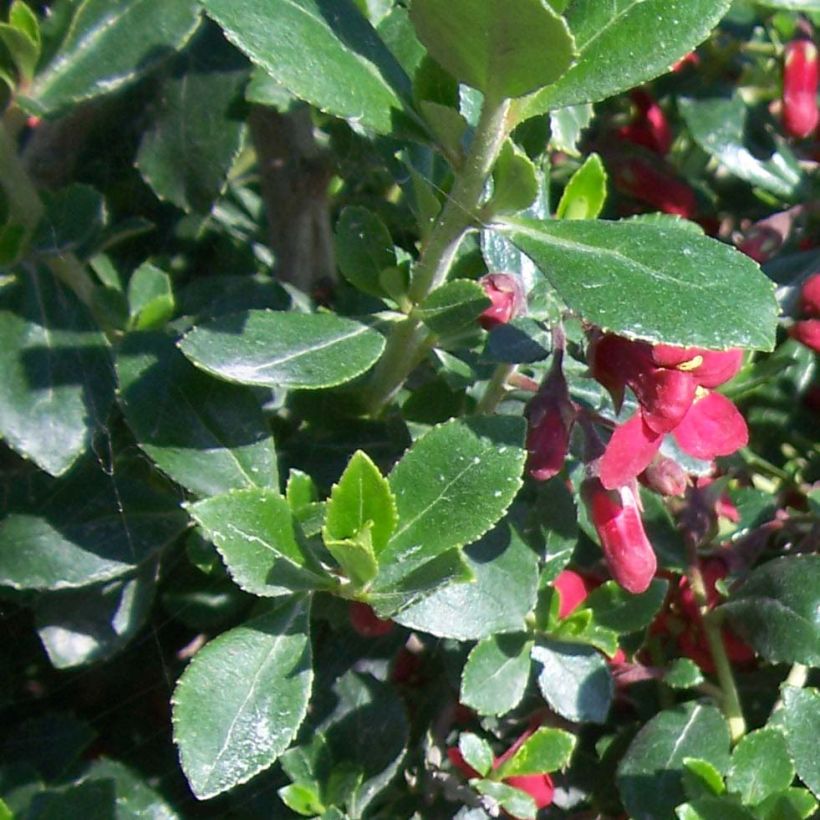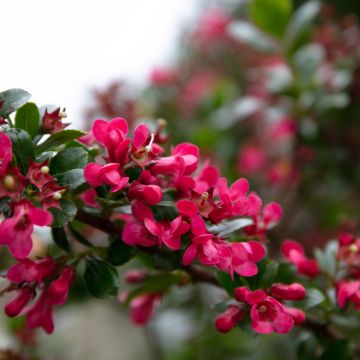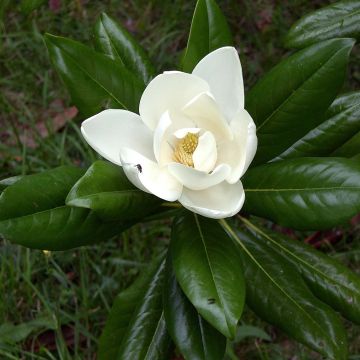

Escallonia Red Dream
Escallonia Red Dream
Escallonia Red Dream
Redclaws
Super vigorous
Marcel, 22/03/2025
Special offer!
Receive a €20 voucher for any order over €90 (excluding delivery costs, credit notes, and plastic-free options)!
1- Add your favorite plants to your cart.
2- Once you have reached €90, confirm your order (you can even choose the delivery date!).
3- As soon as your order is shipped, you will receive an email containing your voucher code, valid for 3 months (90 days).
Your voucher is unique and can only be used once, for any order with a minimum value of €20, excluding delivery costs.
Can be combined with other current offers, non-divisible and non-refundable.
Home or relay delivery (depending on size and destination)
Schedule delivery date,
and select date in basket
This plant carries a 24 months recovery warranty
More information
We guarantee the quality of our plants for a full growing cycle, and will replace at our expense any plant that fails to recover under normal climatic and planting conditions.
Would this plant suit my garden?
Set up your Plantfit profile →
Description
Escallonia 'Red Dream' naturally forms a very dense, rounded and slightly spreading dome, dressed in evergreen foliage of an interesting bright green throughout the year. It is also adorned with a summer flowering of a deep red-pink, somewhat scattered but recurring over a long summer period, even autumn if the weather remains mild. Superb when used as a large ground cover, it also thrives in a small hedge or in a container on the terrace, in mild climates or by the seaside. If your climate allows it, plant Escallonia, these rewarding bushes grow quickly, are floriferous, often fragrant and really undemanding!
The 'Red Dream' Escallonia is a hybrid horticultural creation that stands out for its low, bushy and very dense habit. Excellent garden plants in mild climates, Escallonias belong to the Escalloniaceae family and originate from the temperate areas of South America and Chile. In nature, these bushes grow among the shrubs that cover the hillsides or on coasts exposed to sea spray.
This shrub forms a rounded, branching dome with a very bushy habit and moderately fast to quite slow growth, which will not exceed 80-90 cm (31.5-35.4 in) in height at maturity and 1 m (3 ft 4 in) 10 in width. The young shoots of this variety emerge purple and then turn green as they unfold. Its evergreen leaves are 2.5 cm (1 in) long, leathery, alternate, ovate, with wavy edges, and bright medium green. They are densely packed, mostly towards the end of the branches. The flowering takes place from June to August, for about two months, earlier or later depending on the climate, sometimes as early as May in hot climates. A second flowering can occur in September-October. At the end of some branches a short cluster composed of small flowers with five petals, in the shape of carmine pink tubular bells with a white throat, is enclosed at the base in a purple calyx.
Escallonias are a great alternative to Weigela in mild climates, by the seaside as well as in dry gardens. 'Red Dream' forms a beautiful ground cover in front of shrub beds. Its small stature is well suited for small gardens as well as for container cultivation for the ornamentation of terraces and balconies. Well-known to gardeners in Brittany, Ireland or England, Escallonia is also comfortable in Mediterranean climates, after careful planting and regular watering in the first two or three years. It is tolerant of heat, dry summers once established, and slightly chalky soils, and manages to flower even in scorching or shady situations. It is essential in coastal gardens: its flowering, just like that of Olearias, brightens up the grey foliage of Atriplex, Bupleurum fruticosum, or Correa alba rosea. In a flower bed, it can be associated with cistus, Polygala, Indigofera, Grevillea (in neutral to acidic soil) or with spring-flowering shrubs such as evergreen and compact Ceanothus, brooms (Cytisus scoparius), Loropetalum chinense, etc.
Report an error about the product description
Escallonia Red Dream in pictures




Plant habit
Flowering
Foliage
Botanical data
Escallonia
Red Dream
Escalloniaceae
Redclaws
Cultivar or hybrid
Other Escallonias
View all →Planting and care
Escallonia Red Dream is best planted in spring, or in autumn in mild climates. It requires well-drained, light, moist, slightly acidic, neutral, or even slightly limestone soil, in a sheltered and warm location. It blooms more abundantly in the sun, but tolerates shaded exposures well. Once well established, it requires no watering in summer, even in dry climates. It can withstand sea spray but not cold winter winds. You can apply a rose fertilizer in spring if your soil is very poor. Prune to balance the silhouette in February and September. It dislikes heavy soils and stagnant moisture, especially in winter. If the soil is too heavy and chalky, it may suffer from chlorosis; if so, apply a dose of sequestrene every year in spring. Prune to a third of its height during the first years so that the bush acquires a dense and compact habit. It can also be pruned into a ball shape. In regions on the edge of the hardiness zone, plant it in a location protected from dominant winds, against a south wall or facing west at the back of a bed or in a hedge, and mulch the base in winter. If your escallonia freezes in winter, it may sprout from the base in spring. Elsewhere, it can be grown in a container to be stored indoors in winter in a bright room, protected from severe frost, remembering to water it occasionally.
Planting period
Intended location
Care
-
, onOrder confirmed
Reply from on Promesse de fleurs
Similar products
Haven't found what you were looking for?
Hardiness is the lowest winter temperature a plant can endure without suffering serious damage or even dying. However, hardiness is affected by location (a sheltered area, such as a patio), protection (winter cover) and soil type (hardiness is improved by well-drained soil).

Photo Sharing Terms & Conditions
In order to encourage gardeners to interact and share their experiences, Promesse de fleurs offers various media enabling content to be uploaded onto its Site - in particular via the ‘Photo sharing’ module.
The User agrees to refrain from:
- Posting any content that is illegal, prejudicial, insulting, racist, inciteful to hatred, revisionist, contrary to public decency, that infringes on privacy or on the privacy rights of third parties, in particular the publicity rights of persons and goods, intellectual property rights, or the right to privacy.
- Submitting content on behalf of a third party;
- Impersonate the identity of a third party and/or publish any personal information about a third party;
In general, the User undertakes to refrain from any unethical behaviour.
All Content (in particular text, comments, files, images, photos, videos, creative works, etc.), which may be subject to property or intellectual property rights, image or other private rights, shall remain the property of the User, subject to the limited rights granted by the terms of the licence granted by Promesse de fleurs as stated below. Users are at liberty to publish or not to publish such Content on the Site, notably via the ‘Photo Sharing’ facility, and accept that this Content shall be made public and freely accessible, notably on the Internet.
Users further acknowledge, undertake to have ,and guarantee that they hold all necessary rights and permissions to publish such material on the Site, in particular with regard to the legislation in force pertaining to any privacy, property, intellectual property, image, or contractual rights, or rights of any other nature. By publishing such Content on the Site, Users acknowledge accepting full liability as publishers of the Content within the meaning of the law, and grant Promesse de fleurs, free of charge, an inclusive, worldwide licence for the said Content for the entire duration of its publication, including all reproduction, representation, up/downloading, displaying, performing, transmission, and storage rights.
Users also grant permission for their name to be linked to the Content and accept that this link may not always be made available.
By engaging in posting material, Users consent to their Content becoming automatically accessible on the Internet, in particular on other sites and/or blogs and/or web pages of the Promesse de fleurs site, including in particular social pages and the Promesse de fleurs catalogue.
Users may secure the removal of entrusted content free of charge by issuing a simple request via our contact form.
The flowering period indicated on our website applies to countries and regions located in USDA zone 8 (France, the United Kingdom, Ireland, the Netherlands, etc.)
It will vary according to where you live:
- In zones 9 to 10 (Italy, Spain, Greece, etc.), flowering will occur about 2 to 4 weeks earlier.
- In zones 6 to 7 (Germany, Poland, Slovenia, and lower mountainous regions), flowering will be delayed by 2 to 3 weeks.
- In zone 5 (Central Europe, Scandinavia), blooming will be delayed by 3 to 5 weeks.
In temperate climates, pruning of spring-flowering shrubs (forsythia, spireas, etc.) should be done just after flowering.
Pruning of summer-flowering shrubs (Indian Lilac, Perovskia, etc.) can be done in winter or spring.
In cold regions as well as with frost-sensitive plants, avoid pruning too early when severe frosts may still occur.
The planting period indicated on our website applies to countries and regions located in USDA zone 8 (France, United Kingdom, Ireland, Netherlands).
It will vary according to where you live:
- In Mediterranean zones (Marseille, Madrid, Milan, etc.), autumn and winter are the best planting periods.
- In continental zones (Strasbourg, Munich, Vienna, etc.), delay planting by 2 to 3 weeks in spring and bring it forward by 2 to 4 weeks in autumn.
- In mountainous regions (the Alps, Pyrenees, Carpathians, etc.), it is best to plant in late spring (May-June) or late summer (August-September).
The harvesting period indicated on our website applies to countries and regions in USDA zone 8 (France, England, Ireland, the Netherlands).
In colder areas (Scandinavia, Poland, Austria...) fruit and vegetable harvests are likely to be delayed by 3-4 weeks.
In warmer areas (Italy, Spain, Greece, etc.), harvesting will probably take place earlier, depending on weather conditions.
The sowing periods indicated on our website apply to countries and regions within USDA Zone 8 (France, UK, Ireland, Netherlands).
In colder areas (Scandinavia, Poland, Austria...), delay any outdoor sowing by 3-4 weeks, or sow under glass.
In warmer climes (Italy, Spain, Greece, etc.), bring outdoor sowing forward by a few weeks.


















































